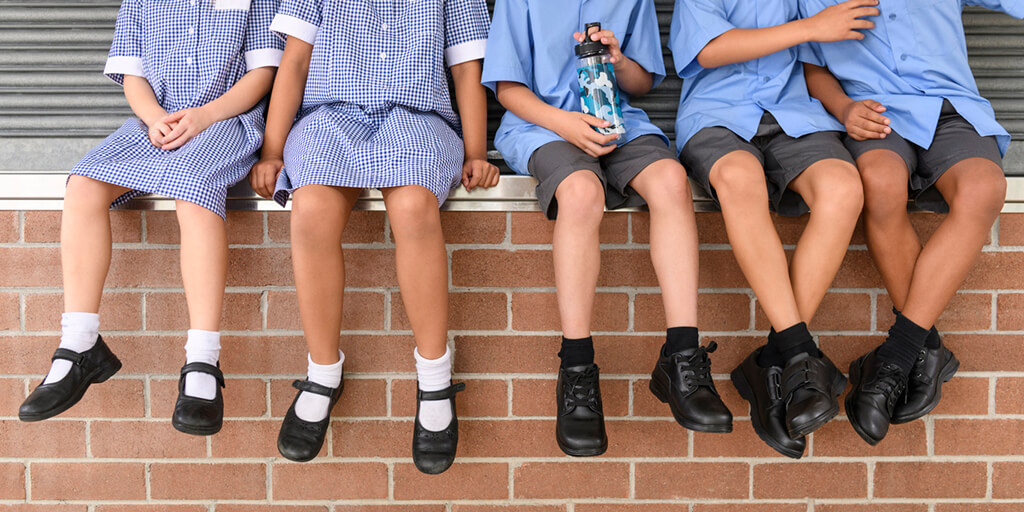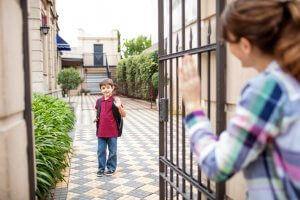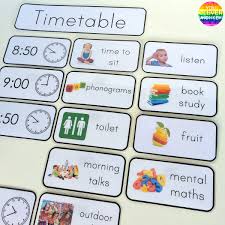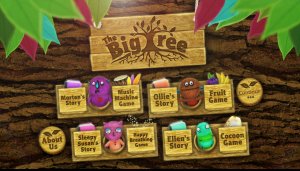
Back to school in a COVID-19 world
Over the past few weeks, and this week in Victoria, schools are beginning to reopen their doors for students post the Corona Virus lockdown. There are mixed feelings for all involved.
What kind of actions or behaviours might we expect to see in our children?
This blog is authored by Lauren Thomas, Professional Community Engagement Manager at the Australian Childhood Foundation.
Over the past few weeks, and this week in Victoria, schools are beginning to reopen their doors for students post the Corona Virus lockdown. There are mixed feelings for all involved. During this period of lock-down Australians (indeed people all over the world) have faced changes to life and lifestyle that none of us could have predicted. As the virus took over, we were taught that to stay home is to stay safe together while we ‘flattened the curve’.
And now, we embark together on a new step into a new world as our children return to school. Some are excited, many parents are relieved, and for almost all of us, there exists a nervous tension; the thrill of getting back to ‘normal’ is juxtaposed with the knowledge that ‘normal’ no longer exists. Not in the same comforting way. Our worlds, the world of parents, and the world of children have changed. In today’s blog, we wanted to explore the feelings, behaviours and actions that returning to school might produce.
You may have experienced the mixed emotions of joy as you head out of the house to the supermarket only to find that once there, you also feel anxious around others, hyper-aware of the new 1.5 metre boundaries and irritated at those who seem to disregard the new rules. We have newly defined parameters on what ‘safe’ means, and these impact our interpersonal relationships as well as our environments.
Our children are also likely to share these mixed emotions; excitement to be going back to school and friends, as well as nervousness, fear of coming into contact with the virus, and of bringing it home to those they love. They wonder how they will play with their friends if they aren’t meant to touch, if their teacher will be there to welcome them in, and if their classrooms are safe and virus free. Children, like adults, hold these feelings in their body, but unlike adults, they can lack the language to accurately describe or understand all they feel.
For children, fear and anxiety are often interpreted as feeling unwell. Stomach aches, headaches and other somaticized presentations are common, along with behaviours that could be misunderstood as angry, aggressive or withdrawn as children struggle to make sense of all that is happening.
Like many of us, children can find change difficult. Anticipating the unknown puts us on edge and our brains respond by being more alert – to protect us from a possible threat. We can have trouble sleeping, see changes in appetite and notice how our responses to those we love are impacted. For children who are already predisposed to anxiety or who have a history of abuse, violence or trauma, this response is likely to be exaggerated. Their attention systems can become consumed with scanning for threat and any new or different circumstance will heighten responses.
With this in mind, we thought it might be timely to share some of what we believe parents and carers might see in the coming weeks. These are normal responses to abnormal situations and are informed by the neuroscience of stress and trauma.
Challenging School drop–offs

Drop-offs may be challenging in the first few weeks, especially where parents aren’t able to accompany their child into the school grounds. When under
stress or threat, most of us turn to those we trust and feel safe with to help us manage our nerves. This behaviour is less sophisticated in children and can result in clingy behaviours on separation along with nervousness about going to school in general.
Things to do that may help: talk with your children about what to expect. Roleplay how the drop-off might go. For especially anxious children, request as much information as possible from the school to allow you to accurately paint a picture of what may take place – ie. Mrs Scott will meet you at the gate and from there you can make your way upstairs to drop your bag in your locker and meet your friends in the classroom. I will pick you up at X gate and will be waiting for you when the day finishes.
Challenging behaviours at times of transition

Teachers may also notice an increase in challenging behaviours during transition times in the school day. Parents may notice the same at home.
Things to do that may help: as much as possible, prepare children for transitions with warnings ahead of time. Ie ‘In five minutes, we will stop doing this activity and start with…’. For teachers, establish and keep routines as much as possible to keep the day predictable. Using tools like visual timetables may also be effective for helping students to understand the flow of their day and what to expect next.
Memory impacts
During times of stress, the brain has difficulty laying down memories in the way we can when we are calm. As a result, it can be difficult to learn new or complex content when we don’t feel relaxed. It can also be difficult to recall memories during times of stress.
Things to do that may help: we recommend keeping directions short and simple, taking a step at a time. A simple rule to follow is that the more distressed a child is, the fewer memory functions their brain can utilise. So, if a child’s behaviour is an issue, and they are dysregulated, then assisting them to return to calm before redirecting them will be advantageous to their recall. For the same reason, we recommend outlining the direction of the day and any rules for behaviour at a time when no one is in trouble, as this will give everyone the greatest chance of retaining the information.
To help with memory retention during stressful times, it can be useful to explore calming strategies that children can use when they feel dysregulated. Breathing exercises, mindfulness, yoga and sensory toys are all different examples that could be used here. The important thing is that your child has found the activity to be effective, and feels able to use it during their day.
A resource that may help: At the end of the day, it might also be helpful to revisit the journey of the day so far. An activity such as ‘Line of my day’ may be useful here. You can download a pdf of this tool here.
Complaints of sickness

As explained earlier, children often experience their feelings somatically. We might expect to see headaches, stomach aches, muscle tension and difficulty getting to sleep as a result of confusion, worry, fear or anxiety. Our brains and bodies are connected, and it isn’t surprising that our bodies manifest the feelings we have in a variety of ways. What may be missing is the language and knowledge to connect the two and understand what is happening.
Things to do that may help: Support children to explore any connection between their thinking and the somatised feelings they describe. Help them to understand connections by describing what you’ve noticed as words, actions or activities that seem to precede the onset of the expressed sickness.
A resource that may help: There are a huge amount of resources available to help children identify and explore emotions/feeling states. A tool we’ve produced that may also help children identify sensory strategies that may help them can be found here, and you could also try the Foundation’s app ‘The Big Tree’ which shares the story of four different creatures as they explore and attempt to understand different feelings states.
We see all of these kinds of behaviours and responses, on various levels, with children we counsel through our services. From a neurobiological perspective, we understand them as normal, adaptive responses to prioritise safety in times of uncertainty or danger. These protective responses help keep us safe, but they are also exhausting. Staying alert and trying to learn all day in an environment that has been declared unsafe for the last two to three months is tiring work, and we believe it would be reasonable to expect your little ones to take time to adapt back.
We hope that by writing this information out, we can encourage parents to look at their children with a new lens. If we approach this new phase with mindful openness and curiosity, we can respond to our own, and our children’s, behaviours in a way that builds connection and support. These are difficult times, and the more we can practise and encourage acts of kindness, the better we are likely to emerge.
